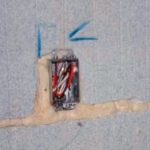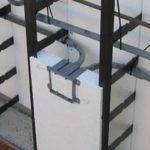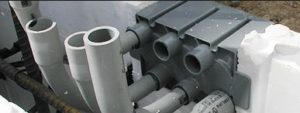As we decide to build our house with ICF walls, floors and roof we need to think ahead as how to run electrical wiring. There is the typical electrical wiring and structured wiring. Structured wiring is a general term that refers to a whole-house network of audio, video, data, telephone, intercom, television, home automation, security alarms, cable and satellite hookups, ethernet and networking, security cameras, lighting, etc.

Electrical chase through ICF foam
With a house built of concrete, how electrical wiring is run is a big concern. If you are going to have any wiring through a concrete wall, plan ahead.
Two methods I see are; electrical with conduit within the concrete wall, and electrical wire (Romex) within the ICF foam (up against the concrete core). The cost for the first option is higher due to the cost of installing the PVC conduit during the ICF wall forming process. It may decrease the R value of the walls as heat can transfer into the house.
On the other hand you can fix wiring problems and decrease the chance of cutting into the conduit during construction or when nailing through the wall. The other method requires slicing into the ICF foam to install the wiring. Different local inspectors may require wiring to be covered with a metal plate even if buried next to the concrete core. This design would not decrease the R value of the wall.

Utility chase in ICF concrete

Chase at electrical box
Structured wiring can use Smurf tubing which is electrical non-metallic tubing (ENT) System. Carlon ENT is a light, flexible and strong non-metallic raceway system for use in walls, floors and non-plenum ceilings.

Metal chase through ICF foam
Since the ICF walls are only on the perimeter, the remainder of the electrical work will be typical for a steel stud constructed home.

Smurf tubing
